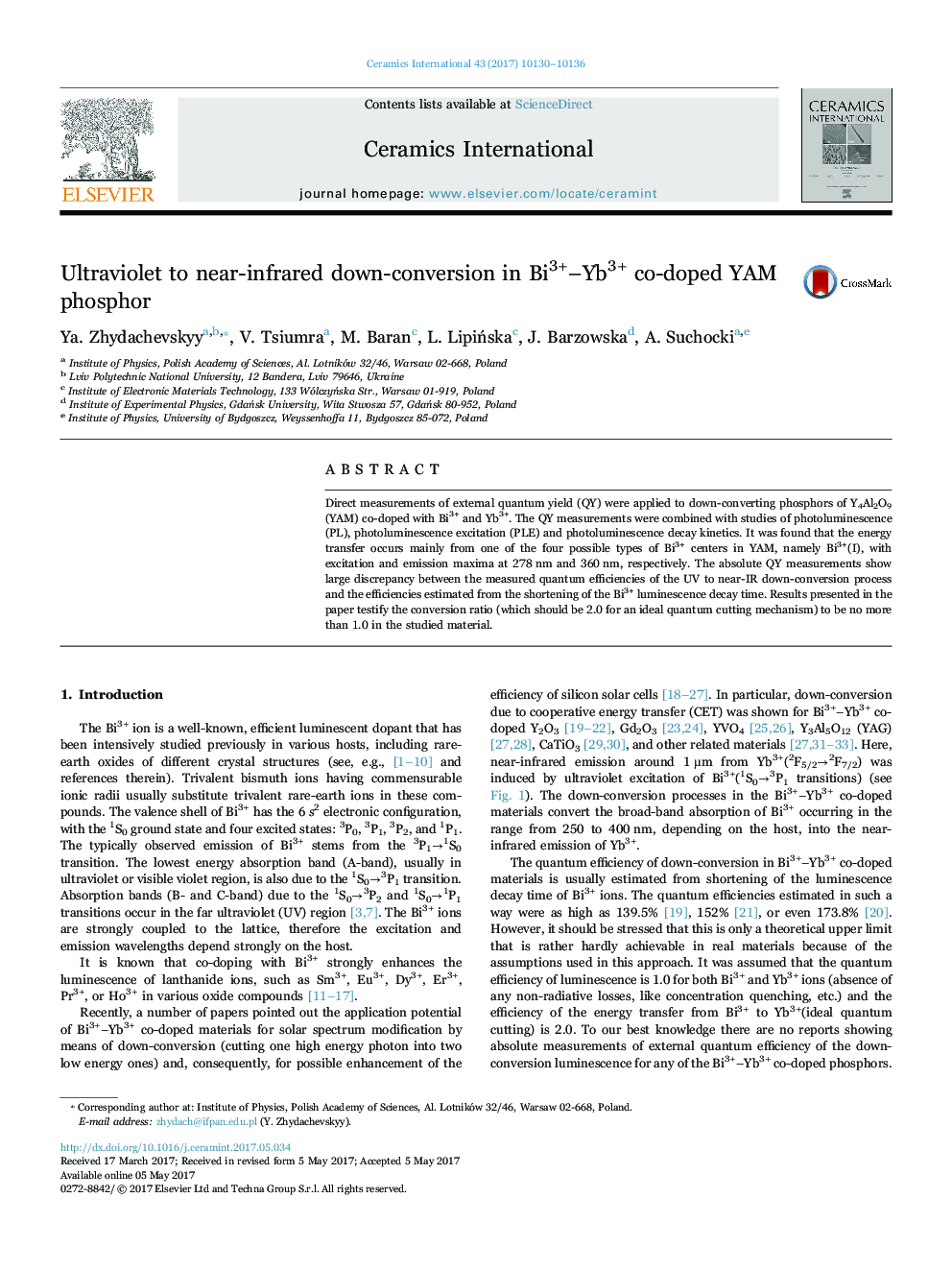| Article ID | Journal | Published Year | Pages | File Type |
|---|---|---|---|---|
| 5437677 | Ceramics International | 2017 | 7 Pages |
Abstract
Direct measurements of external quantum yield (QY) were applied to down-converting phosphors of Y4Al2O9 (YAM) co-doped with Bi3+ and Yb3+. The QY measurements were combined with studies of photoluminescence (PL), photoluminescence excitation (PLE) and photoluminescence decay kinetics. It was found that the energy transfer occurs mainly from one of the four possible types of Bi3+ centers in YAM, namely Bi3+(I), with excitation and emission maxima at 278Â nm and 360Â nm, respectively. The absolute QY measurements show large discrepancy between the measured quantum efficiencies of the UV to near-IR down-conversion process and the efficiencies estimated from the shortening of the Bi3+ luminescence decay time. Results presented in the paper testify the conversion ratio (which should be 2.0 for an ideal quantum cutting mechanism) to be no more than 1.0 in the studied material.
Related Topics
Physical Sciences and Engineering
Materials Science
Ceramics and Composites
Authors
Ya. Zhydachevskyy, V. Tsiumra, M. Baran, L. LipiÅska, J. Barzowska, A. Suchocki,
